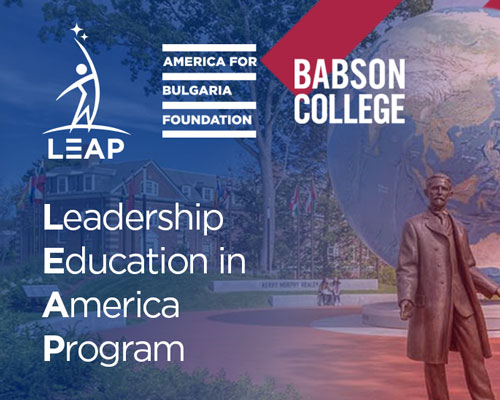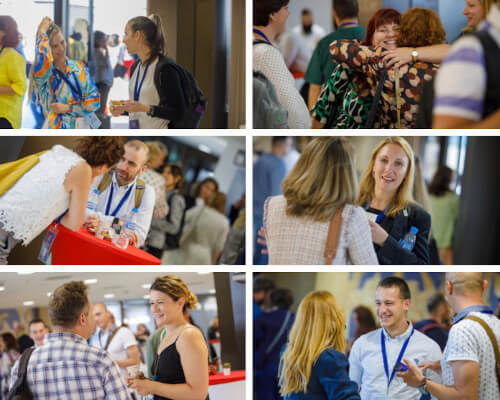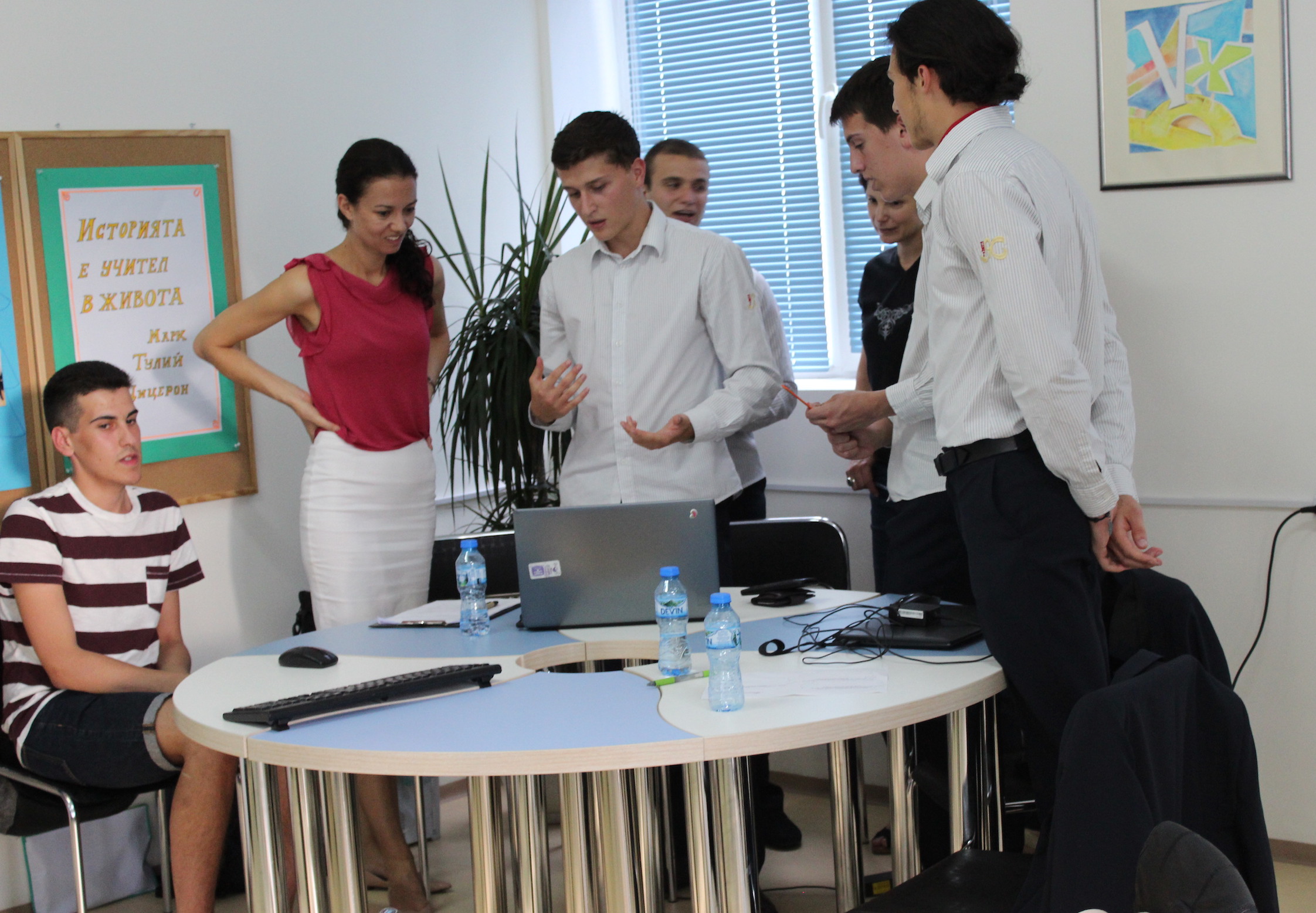 Just before World War II broke out in 1939, British banker Sir Nicholas Winton helped rescue 669 Jewish children from Czechoslovakia by securing their transportation by train to the United Kingdom and their placement with British families. The world didn’t find out about Winton’s heroic feat until 1988, fifty years later. Today, there are several documentaries and a play about the “British Schindler,” and this year his incredible story even became the subject of a computer game developed by eleventh-graders from the Yane Sandanski High School of Natural Sciences and Mathematics in the Bulgarian town of Gotse Delchev.
Just before World War II broke out in 1939, British banker Sir Nicholas Winton helped rescue 669 Jewish children from Czechoslovakia by securing their transportation by train to the United Kingdom and their placement with British families. The world didn’t find out about Winton’s heroic feat until 1988, fifty years later. Today, there are several documentaries and a play about the “British Schindler,” and this year his incredible story even became the subject of a computer game developed by eleventh-graders from the Yane Sandanski High School of Natural Sciences and Mathematics in the Bulgarian town of Gotse Delchev.
Stefan, Petko, Vesselin, and Daniel are the creators of the online game called Nicholas Winton’s Trains. They made one version using JavaScript and a second version with the help of the Unity game development software, their creations aiming to illustrate the many obstacles the rescue trains had to overcome to fulfill their mission. Players control the movement of the trains in the games, and their goal is to avoid capture by the tanks they encounter on the way. At the finish line, players will hear interviews with three survivors and watch the emotional encounter between Sir Winton and some of the rescued children, then grownups, on the BBC show That’s Life in 1988. “We wanted younger students to understand how risky the journey was and that it could have ended very differently,” the creators of the game explained.
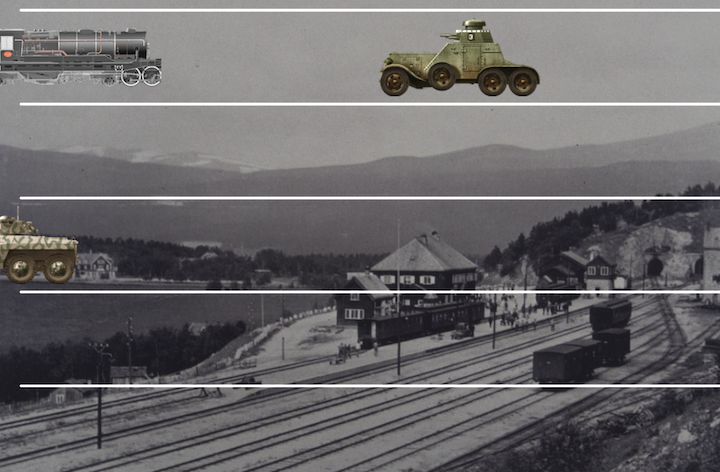 The computer game is one of several projects developed by teams of eleventh-graders from Gotse Delchev’s math and science high school and presented publicly in June this year. “World War II: Stories in History” was the unifying theme of the student projects, which aimed to demonstrate that effective teaching and learning combine several disciplines. To develop their projects, students used tools from history, languages, computer science, and mathematics. They visited museums and libraries, interviewed war veterans, edited videos in Russian and English, made a website, and collected recipes for dishes from the mid-twentieth century. One of the teams put together a WWII-themed newspaper, while another created a mental map that the audience completed during the presentation.
The computer game is one of several projects developed by teams of eleventh-graders from Gotse Delchev’s math and science high school and presented publicly in June this year. “World War II: Stories in History” was the unifying theme of the student projects, which aimed to demonstrate that effective teaching and learning combine several disciplines. To develop their projects, students used tools from history, languages, computer science, and mathematics. They visited museums and libraries, interviewed war veterans, edited videos in Russian and English, made a website, and collected recipes for dishes from the mid-twentieth century. One of the teams put together a WWII-themed newspaper, while another created a mental map that the audience completed during the presentation.
When asked what they found most valuable in the project, participants were unanimous—the skills they developed through teamwork. There were many challenges, but the result is evident: “We got along before, but now we get along even better,” said one eleventh-grader.
“We are working on developing an online platform where the students’ projects will be uploaded. Our goal is to share their work and engage as many students as possible,” said Elka Bozhikova, the school’s principal. In 2017, the high school joined the Schools of the Future family, acquiring a high-tech science and math center as part of the America for Bulgaria Foundation’s signature program.
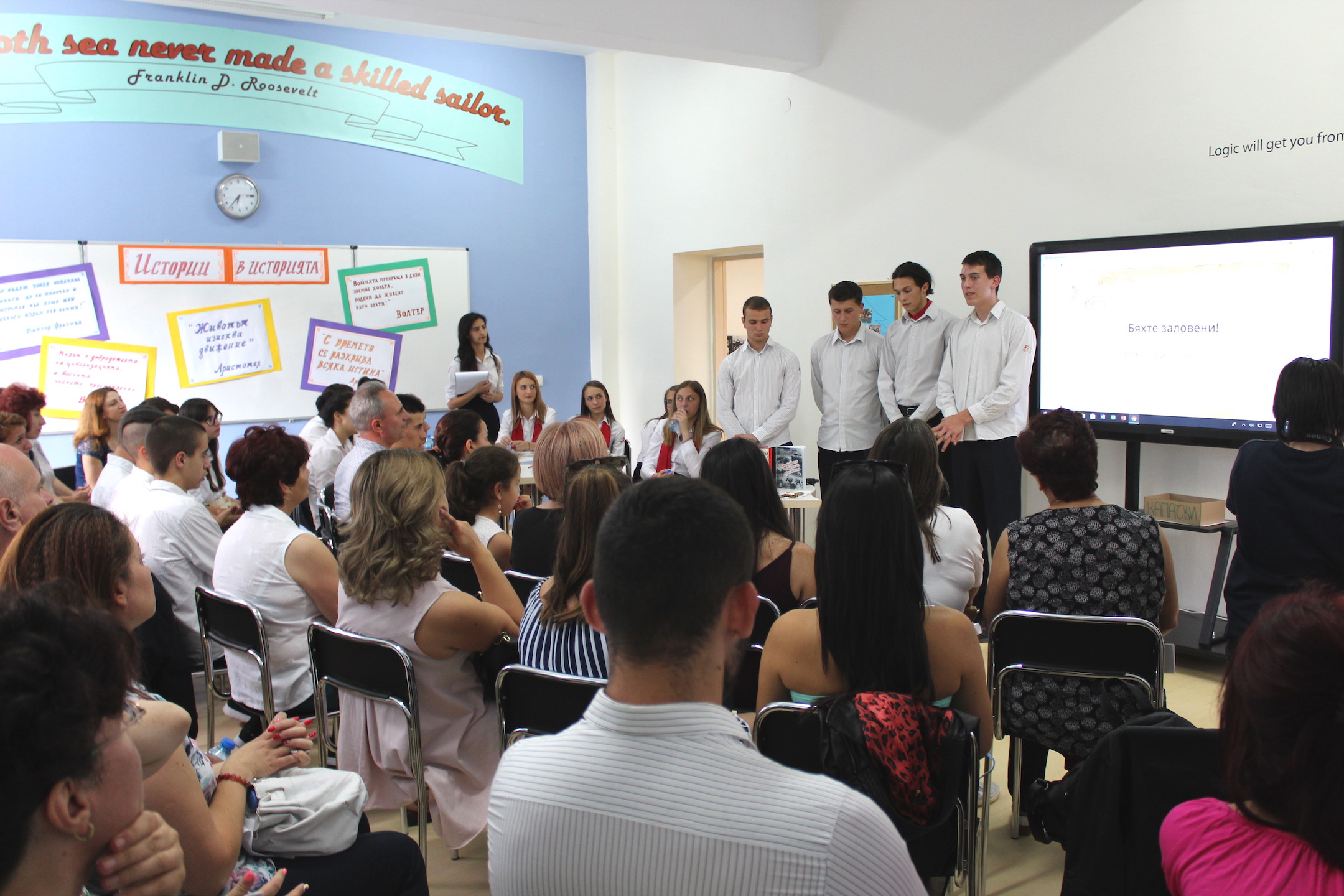 Teamwork, the development of hands-on projects, and the use of knowledge from a variety of subjects in the study of real-world phenomena and events are just some of the educational practices promoted at the Schools of the Future. The program also supports the integration of information technologies in education and helps improve the learning environment at Bulgarian schools. Between 2009 and 2018, ABF has invested over 9.4 million levs to build modern computer and natural science labs, language and art centers, and group work and recreation areas in 85 schools across Bulgaria, 68 of which are outside Sofia. Local communities contributed an additional 3.1 million levs to help with school transformation.
Teamwork, the development of hands-on projects, and the use of knowledge from a variety of subjects in the study of real-world phenomena and events are just some of the educational practices promoted at the Schools of the Future. The program also supports the integration of information technologies in education and helps improve the learning environment at Bulgarian schools. Between 2009 and 2018, ABF has invested over 9.4 million levs to build modern computer and natural science labs, language and art centers, and group work and recreation areas in 85 schools across Bulgaria, 68 of which are outside Sofia. Local communities contributed an additional 3.1 million levs to help with school transformation.
A 2016 study on the impact of technology and the improved learning environments on student achievement showed that students from the Schools of the Future not only earned better grades in the sciences and Bulgarian language and literature but were also more capable of solving problems and working with diagrams, tables, charts, and texts containing numeric information. These students were less aggressive at school and coped better in conflict situations.
The study also showed that the positive impact is felt throughout the school community, and innovation at one school often causes a chain reaction, leading to technological innovation at other schools as well. Last but not least, the Schools of the Future promote charitable giving as a means of funding school initiatives.
